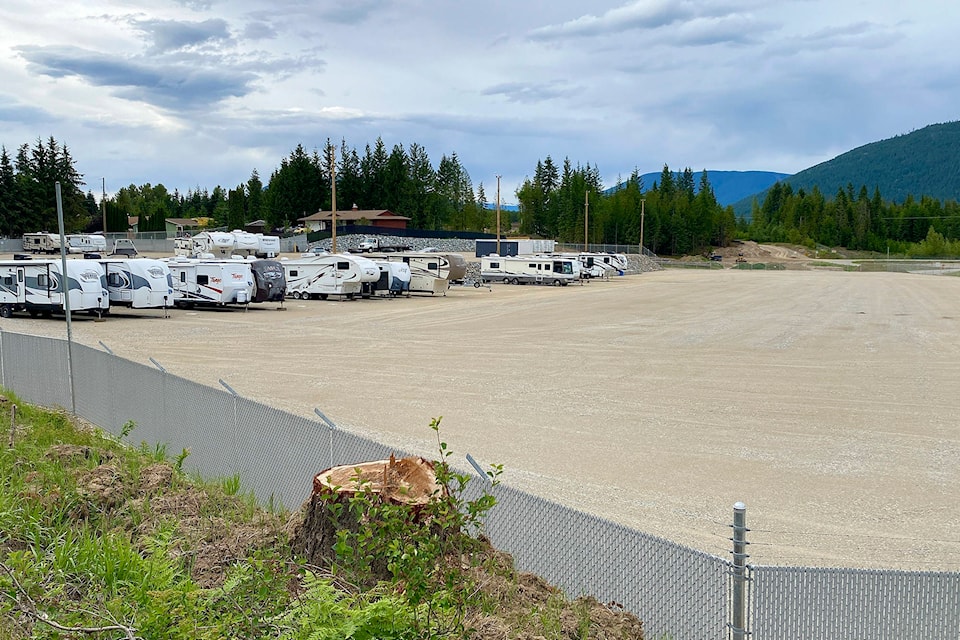Should Salmon Arm allow its remaining industrial land to be used for storage facilities?
That question prompted city staff to prepare a report to council, a report which led to a preliminary wish from the majority of council to limit the amount of land used.
Kevin Pearson, the city’s director of development services, said at the June 7 planning meeting that Salmon Arm currently has nine primary storage businesses on industrial land, featuring either outside storage yards with no buildings or mini-warehousing.
The count does not include auto-wrecking or industrial/commercial businesses storing inventory or items outside and on site.
The city has approximately 53 hectares (130 acres) of industrial land remaining, most of which lies between 10th and 20th avenues SE adjacent to Highway 97B near Auto Road.
About 14 hectares (34 acres) of industrial land is now being used, or soon will be, for storage. Of the 14 hectares, Pearson said approximately one-half contains outside storage and is mostly without structures, which means it could be developed for other industrial/commercial uses in the future should the market demand.
But he noted two main obstacles can arise when building on land where storage businesses exist: the additional need to build roads and servicing, plus possible contamination that could require remediation.
Pearson pointed to two trends regarding storage: one where individuals, businesses and organizations in Salmon Arm use metal shipping containers to store materials on lands not zoned for that use.
The other is consumer demand for online shopping and the global supply chain of large companies that require land in local markets for shipping, receiving, warehousing, distribution, transportation and equipment.
“Staff periodically receive enquiries and complaints that there is not enough land for these purposes,” Pearson wrote.
Read more: Council OKs two Salmon Arm properties leaving land reserve for light industrial use
Read more: Sixty-metre cellular tower receives Salmon Arm council’s initial support
Read more: Salmon Arm council’s concerns eased over Mount Ida logging
He provided four options on how to handle zoning for storage facilities. Of the four, his recommendation was to “maintain the status quo and let the market dictate what industrial uses can afford to develop and service the approximately 53 hectares (130 acres) remaining industrial land base.”
The majority of council voiced support for another option initially favoured by Coun. Chad Eliason. He said he liked the plan to classify mini-warehousing and outside storage as ‘accessory’ uses in industrial zones, not primary, and/or having them occupy a maximum of 20 per cent or less of a total parcel area.
For example, a boat business that sells boats could use a maximum of 20 per cent of the property to store people’s boats.
Eliason said the best use of land, if Salmon Arm wants to be a high-tech hub, for instance, is to make the land available for businesses that will complement existing businesses. He said while storage businesses provide building permit revenues and taxes in the short term, they don’t provide jobs.
Several members of council expressed similar opinions. Council decided to wait a week, until the June 14 council meeting, to discuss it further.
martha.wickett@saobserver.net
Like us on Facebook and follow us on Twitter
